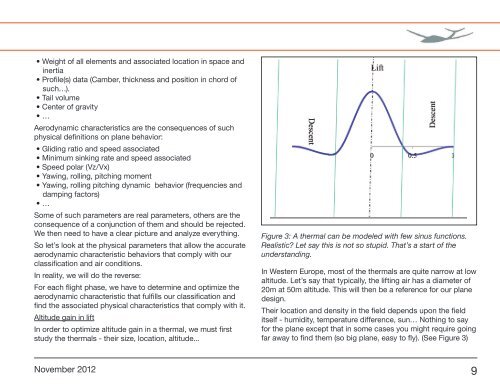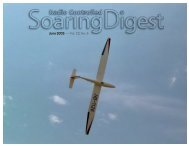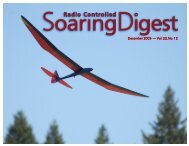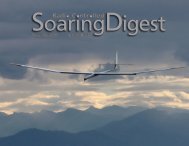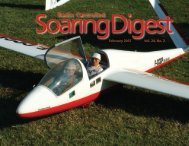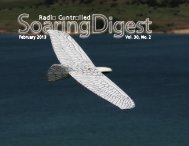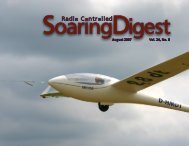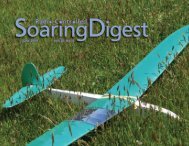Create successful ePaper yourself
Turn your PDF publications into a flip-book with our unique Google optimized e-Paper software.
• Weight of all elements and associated location in space and<br />
inertia<br />
• Profile(s) data (Camber, thickness and position in chord of<br />
such…).<br />
• Tail volume<br />
• Center of gravity<br />
• …<br />
Aerodynamic characteristics are the consequences of such<br />
physical definitions on plane behavior:<br />
• Gliding ratio and speed associated<br />
• Minimum sinking rate and speed associated<br />
• Speed polar (Vz/Vx)<br />
• Yawing, rolling, pitching moment<br />
• Yawing, rolling pitching dynamic behavior (frequencies and<br />
damping factors)<br />
• …<br />
Some of such parameters are real parameters, others are the<br />
consequence of a conjunction of them and should be rejected.<br />
We then need to have a clear picture and analyze everything.<br />
So let’s look at the physical parameters that allow the accurate<br />
aerodynamic characteristic behaviors that comply with our<br />
classification and air conditions.<br />
In reality, we will do the reverse:<br />
For each flight phase, we have to determine and optimize the<br />
aerodynamic characteristic that fulfills our classification and<br />
find the associated physical characteristics that comply with it.<br />
Altitude gain in lift<br />
In order to optimize altitude gain in a thermal, we must first<br />
study the thermals - their size, location, altitude...<br />
Figure 3: A thermal can be modeled with few sinus functions.<br />
Realistic? Let say this is not so stupid. That’s a start of the<br />
understanding.<br />
In Western Europe, most of the thermals are quite narrow at low<br />
altitude. Let’s say that typically, the lifting air has a diameter of<br />
20m at 50m altitude. This will then be a reference for our plane<br />
design.<br />
Their location and density in the field depends upon the field<br />
itself - humidity, temperature difference, sun… Nothing to say<br />
for the plane except that in some cases you might require going<br />
far away to find them (so big plane, easy to fly). (See Figure 3)<br />
November <strong>2012</strong> 9


